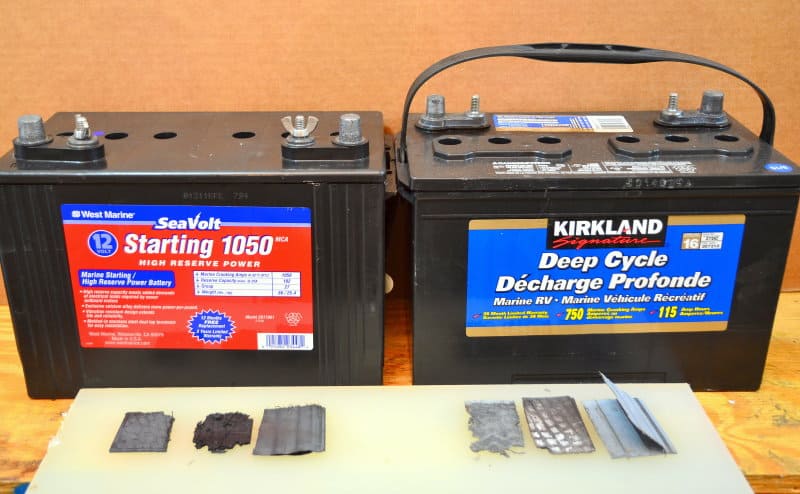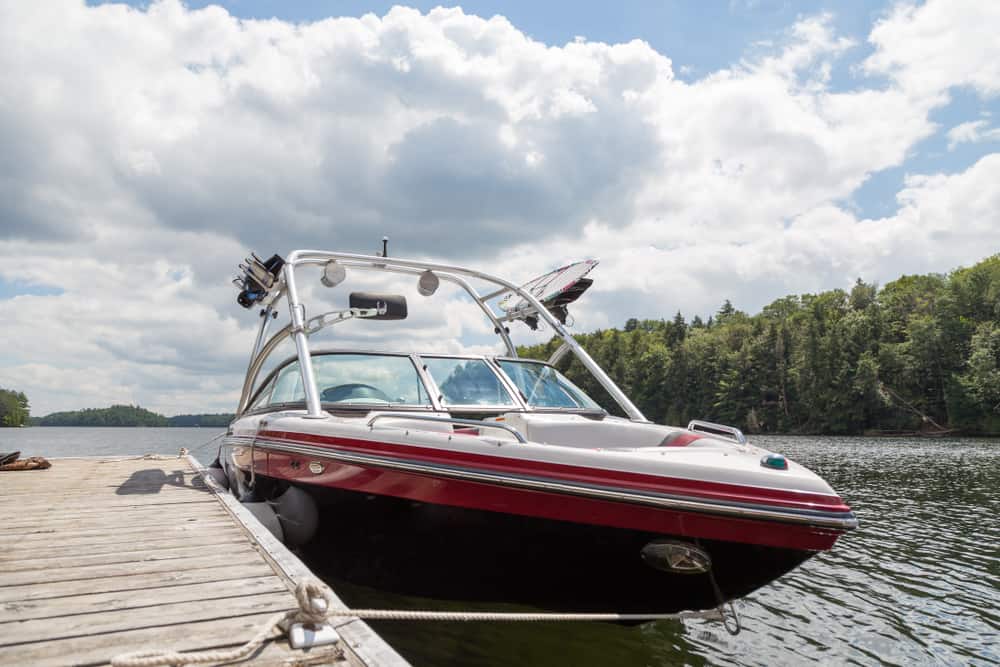Whether you have a bay boat or a center console boat, you need to make sure your batteries can meet the demands of your trip, especially when you have a lot of electrical demands placed on your marine vessel. However, “marine batteries” and “deep cycle batteries” are often used interchangeably, causing confusion for new boaters.
What makes a marine battery different? In this article, we will focus on comparing a marine battery vs deep cycle battery.
Table of Contents
What Is a Marine Battery?
Compared to an automotive battery, batteries made for maritime use have more robust, elevated plates to prevent short circuits and allow the battery to cope with the random vibrations and pounding that comes with moving across rough waters. Cruising across bodies of water is, of course, much different from traveling in a car on the road. For this reason, marine batteries are never cheap.
Types of Marine Batteries
Marine batteries fall into three categories and each has its own specialty. Now, let us see how these batteries differ from each other.
Marine Starting Batteries
As the name suggests, the purpose of a marine starting battery is to crank the engine of your boat, especially when it has been dormant for some time. This battery type delivers strong bursts of energy for a couple of seconds, often ranging between 75 to 400 amps depending on your boat’s engine.
However, a cranking battery is not up to snuff in terms of long-term power. This battery type doesn’t bring much to the table other than delivering powerful spurts of energy in a short period of time. That being the case, you should not use a starting marine battery for powering appliances and trolling motors.
Marine Deep Cycle Batteries
Compared to a marine starting battery, this battery type delivers lower levels of power over a longer period of time, usually lasting for several hours. Marine deep cycle batteries are designed to stand up to hundreds of charging and discharging cycles with minimal wear and tear.
A marine deep cycle battery is ideal for running an electric trolling motor or when your boat comes equipped with plenty of electronic systems, such as a windlass, depth finder, fish finders, and radios, among other accessories.
Keep in mind that a deep cycle battery is incapable of a stand-alone operation. You will also need a marine starting battery for your boat’s engine ignition.
Marine Dual-Purpose Batteries
When space is a premium, users often tend to consider getting a hybrid marine battery, instead. Marine dual-purpose batteries can handle both the jobs of the two battery types mentioned earlier. The only downside is that these batteries have a shorter lifespan than those built with a single role.
What Is a Deep Cycle Battery?

“Deep cycle” is an industrial term for batteries configured to withstand constant discharging and recharging. Deep cycle batteries provide sustained power over a long period of time, which makes them ideal for various applications that need more than just a quick, strong startup.
A deep cycle battery delivers a reliable stream of energy without interruption until it is 80% discharged. This long, steady stream of energy is suitable not just for marine applications, but also for powering golf carts, recreational vehicles, flour machines, and materials handling equipment, among others.
Types of Deep Cycle Batteries
Deep cycle batteries fall into two categories. Let us look at these technologies in more detail.
Flooded Lead Acid Batteries
These batteries are called “flooded” because their plates are completely submerged in electrolyte fluid. FLA batteries offer exceptional output for the price, but they also require heavy maintenance that involves frequent cleaning and watering.
Valve Regulated Lead Acid Batteries
Commonly known as sealed lead acid batteries, these are recombinant batteries that come with a pressure relief valve to keep the gasses from escaping. VRLA batteries are further classified as Absorbed Glass Mat, Gel, and EV Traction Dry Cell.
VRLA batteries have a shorter recharge time than FLA batteries and other than periodic inspection, they seldom require any maintenance.
Difference Between Marine Battery and Deep Cycle Battery

People often use the terms “deep cycle battery” and “marine battery” interchangeably, which causes confusion. In marine applications, the vast majority of batteries used are either a standalone dual-purpose hybrid battery or a combination of a starting battery and a deep cycle battery. These two batteries work in conjunction, as neither can perform the other’s function.
So, how does a marine starting battery differ from a deep cycle battery?
Structure
The biggest difference between a marine starting battery and a deep cycle battery is found in their plates.
Contrary to the thin plates of marine starting batteries, deep cycle batteries comprise fewer but sturdier, thicker plates. Additionally, the chemical paste and separators of deep cycle batteries are much denser. This structure allows the battery to be impervious to corrosion caused by extended charge and discharge cycles.
Function
As discussed earlier, a marine starting battery generates high currents so your boat can get out on the water ASAP. Despite its ability to produce a big dose of power, it fails to deliver long-term energy needed for traveling. On the other hand, a deep cycle battery keeps your boat operating and ensures your electronics are in perfect working condition.
Cost
Starting batteries for marine applications often cost less than deep-cycle batteries.
While EV Traction Dry Cell and Absorbed Glass Mat deep cycle batteries have a higher upfront cost than Flooded and Gel types, they offer the best value and return on investment.
Newer technologies are replacing lead acid with lithium-ion, although these batteries carry a large price premium. Take note that while all lithium batteries are deep cycle, not all of them are marine-grade.
Conclusion
If you are looking to buy a battery for your boat, you will need both a starting battery and a deep cycle battery. There are also dual purpose marine batteries that find a middle ground between the two, although these hybrids are not as efficient as separate batteries.
Be wary of companies marketing automotive batteries as deep cycle marine batteries. Avoid this con by sticking to reputable, well-established brands, such as Crown, NorthStar, and Vision.
